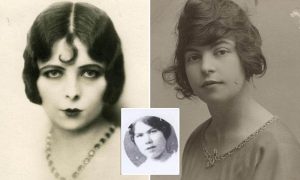A powerful terror ruled over lands in Hungary in the 16th century. For years, citizens were frightened of Elizabeth Bathory. While she lived unharmed by any authority for years, many young girls went missing or ended up dead. It took 35 years and 650 girls for the King of Hungary to take action. Even then, the punishment Bathory faced was nowhere near as cruel as what she did to these young girls.
Elizabeth Bathory, a Hungarian countess, was the daughter of Ann and George Bathory.1 She was born on August 7th, 1590, in Transylvania.2 She came from a wealthy, Protestant family that were significant landowners in Hungary. Elizabeth received a strong education, and she became fluent in several languages.3 Although she seemed to be a regular noble woman, there was a dark truth behind her family and her.

During her childhood, Bathory had a neurological disorder, and the environment around her only contributed to her sadistic ways. She suffered from epilepsy as a child, possibly from familial inbreeding. To cure her epilepsy, her family took blood from servants and put it on her lips. This is thought to be one of the reasons she became obsessed over blood. During this time, no laws protected servants or peasants from being tortured. Her family contributed to her sadism by torturing their servants and peasants.4 One story suggests that after Bathory witnessed a man being sewn into a horse’s stomach for theft, she laughed at the sight of it.5 Bathory saw her family members torture their servants for fun, and this turned her adolescent self into a full-blown killer.
Her life shifted when she married Ferenc Nadasdy, a noble from Hungary. Nadasdy moved Bathory to his estate in Savar. At times, Bathory’s husband went away at war, but when he was at home, he shaped Bathory in how she killed.6 Nadasdy enjoyed torturing peasants and servants in brutal ways. There is a rumor that Elizabeth became pregnant by a peasant right before she married Nadasdy, and he castrated the peasant and gave his body to wild dogs to eat. Bathory’s husband enjoyed killing so much, especially during wars, that he received the nickname “Black Knight of Hungary.”7 Nadasdy taught Bathory new techniques or tricks when torturing her servants. For example, he instructed her to strip her servants naked, cover them in honey, and let bugs eat at them.8 Elizabeth’s husband, Nadasdy, was yet another influence to why she became obsessed with torturing her servants. While Nadasdy taught her how to torture, yet another person in her life would teach her how to kill.
While Elizabeth’s husband was away at war, she met a witch named Anna Darvulia. This witch inspired most of Bathory’s brutal and sadistic killings. Darvulia supposedly implanted in Bathory’s mind that if she killed young virgins and bathed in their blood, she could maintain her youth.9 Bathory confided in Darvulia and took interest in learning more about witchcraft and Satanism. When Darvulia died a few years later, Bathory had to find another women to confide in while doing her killings. She met Erzsi Majorova soon after, who practiced witchcraft. Majorova convinced Bathory to kill noble women because fewer and fewer servants wanted to work for Bathory. Bathory took the advice, which turned out be a mistake for her. People grew more suspicious after she killed one noble girl. She tried to cover it up by saying the girl committed suicide. This is the turning point where Bathory began killing sporadically, and it eventually led to her arrest.10
When Nadasdy passed away in 1604, he gave his whole estate away to Bathory including his castle, Cachtice, in modern day Slovakia. In the years after Bathory’s husband passed, whispers floated around about Bathory’s actions, specifically her killing young girls. Istvan Magyari, a Lutheran minister, filed a complaint about Bathory. The King of Hungary, King Matthias II, ordered Gyorgy Thurzo, Palatine of Hungary, to look into the rumors and accusations about Bathory. Thurzo investigated and accumulated hundreds of witnesses, and a few were willing to testify against Bathory. During the trial, witnesses explained how Bathory would lure in servant girls to kill. She did this by saying she would give them a higher salary.11 The testimonies included how she killed the girls by mutilating their bodies, starving them, freezing them, and torturing them. Inside her castles, there were torture chambers. She used tools such as knives, razors, and wax to torture them.12 She would also bite pieces of flesh off of her victims.13 The people who lived in the same town as Bathory saw the girls that she tortured while they ran errands. Their hands showed burn marks, or their faces were disfigured. One girl even came running out of the castle with a knife still in her foot.14 The king showed no compassion or care for the peasants or servants being killed. It was only when noble girls started disappearing and dying that he demanded Thurzo to look into it.

One day, Thurzo showed up to Bathory’s castle with armed guards. Thurzo found a dead body of a girl and two other girls wounded. Thurzo heard screaming, which led him to find one of Bathory’s torture chambers. It is not known if Elizabeth was actually caught in the act of harming her servants. Elizabeth pleaded her innocence to Thurzo, though he did not believe her, and he eventually arrested her.15 Bathory was only put on house arrest, because they did not want to cause a scene to the public, but rumors were already going around about what she did. She eventually was put on trial.
Soon after her arrest, Bathory attended the trial against her. She pled innocent to each crime. Bathory’s servants, thirteen in total, testified against her. One of the servants provided a list in Bathory’s handwriting of all 650 of her victims. The servants and Majorova who helped gather young women for Bathory to kill were all killed by either burning or beheading as a result of the trial.16 Elizabeth did not face a harsh death sentence. Instead, she was diagnosed as criminally insane.17
After the trials concluded, Thurzo founded Bathory guilty, and she stayed in solitary confinement in her castle, Cachtice, for the rest of her life. The citizens of Hungary did not even speak Bathory’s name for hundreds of years.18 Conspiracy theories argue that Bathory was actually innocent. These theories suggest that the King brought these charges against her because he did not like that she was Protestant and a powerful women.19 However, no evidence exists to back up these theories.

A few years later, Elizabeth Bathory died in solitary confinement on August 22, 1614. She told her guard that her hands were cold, and the next day the guard found her dead.20 She was buried somewhere around her castle, Cachtice. Any remains or signs of her or her body cannot be found today. During the time she lived, she was one of the most powerful women in Hungary.21 She gained notoriety and received the nickname “Blood Countess” through her deviant acts.22 Bathory is known today for being one of the worst female, serial killers. There are only secondary accounts of her actions. There is still no physical evidence to this day that proves she is innocent or guilty.
- Encyclopedia of Murder and Violent Crime, 2003, s.v. “Countess Elizabeth Bathory,” by Lisa Andrews. ↵
- Salem Press Biographical Encyclopedia, 2018, s.v. “Elizabeth Báthory,” by Gavin R.G. Hambly. ↵
- Douglas Brode and Leah Deyneka, Dracula’s Daughters the Female Vampire on Film (Lanham: The Scarecrow Press, Inc., 2014), 139. ↵
- Wikipedia, 2019, s.v. “Elizabeth Báthory.” https://en.wikipedia.org/wiki/Elizabeth_Báthory. ↵
- Tori Telfer, Lady Killers Deadly Women Throughout History (New York: Harper Perennial, 2017), 2. ↵
- Salem Press Biographical Encyclopedia, 2018, s.v. “Elizabeth Báthory,” by Gavin R.G. Hambly. ↵
- Tori Telfer, Lady Killers Deadly Women Throughout History (New York: Harper Perennial, 2017), 4. ↵
- The Vampire Book: The Encyclopedia of the Undead, 2010, s.v. “Bathory, Elizabeth (1560-1614),” by J. Gordon Melton. ↵
- Salem Press Biographical Encyclopedia, 2018, s.v. “Elizabeth Báthory,” by Gavin R.G. Hambly. ↵
- The Vampire Book: The Encyclopedia of the Undead, 2010, s.v. “Bathory, Elizabeth (1560-1614),” by J. Gordon Melton. ↵
- Wikipedia, 2019, s.v. “Elizabeth Bathory.” https://en.wikipedia.org/wiki/Elizabeth Bathory. ↵
- Encyclopedia of Murder and Violent Crime, 2003, s.v. “Countess Elizabeth Bathory,” by Lisa Andrews. ↵
- The Vampire Book: The Encyclopedia of the Undead, 2010, s.v. “Bathory, Elizabeth (1560-1614),” by J. Gordon Melton. ↵
- Tori Telfer, Lady Killers Deadly Throughout History (New York: Harper Perennial, 2017), 12. ↵
- Tori Telfer, Lady Killers Deadly Women Throughout History (New York: Harper Perennial, 2017), 14. ↵
- Salem Press Biographical Encyclopedia, 2018, s.v. “Elizabeth Báthory,” by Gavin R.G. Hambly. ↵
- Encyclopedia of Murder and Violent Crime, 2003, s.v. “Countess Elizabeth Bathory,” by Lisa Andrews. ↵
- Douglas Brode and Leah Deyneka, Dracula’s Daughters the Female Vampire on Film (Lanham: The Scarecrow Press, Inc., 2014), 140. ↵
- The Vampire Book: The Encyclopedia of the Undead, 2010, s.v. “Bathory, Elizabeth (1560-1614),” by J. Gordon Melton. ↵
- Wikipedia, 2019, s.v. “Elizabeth Báthory.” https://en.wikipedia.org/wiki/Elizabeth_Báthory. ↵
- Douglas Brode and Leah Deyneka, Dracula’s Daughters the Female Vampire on Film (Lanham: The Scarecrow Press, Inc., 2014), 139. ↵
- Encyclopedia of Murder and Violent Crime, 2003, s.v. “Countess Elizabeth Bathory,” by Lisa Andrews. ↵



65 comments
El
it’s 1560 not 1590. 1590 is when she was said to have started her crimes.
Shecid Sanchez
This article was incredible! I’ve never heard this story before but it reminded me of the move snow white and the huntsman. Bathing in pure girls blood is heard from a lot in movies but I’ve never heard it happening in real life. The fact that her parents started this sadistic behavior instead of helping her. I wonder if she would’ve grown up to be different if all these people in her life wouldn’t have helped her torment her servants. Seeing that from a young age she would laugh at the torment of the servants I think it would’ve been only a matter of time.
Emily Rodriguez
I had never heard of this story/person prior to reading this article, how disturbing! My jaw dropped the moment I read that she had more than 600 victims. I do wonder though, how coincidental is it that she found a husband that was practicing the same satanist things as her family? How did they find each other? Overall, I believe the author did a good job telling a tragic story. I think it would’ve been a little more beneficial to focus on a specific killing story of hers if there was evidence of one. Great job!
Hali Garcia
I really liked the introduction of this article because it made me wonder what she did and ask why should she have gotten a stricter punishment, and boy did I find out. It was interesting to read about the impact her family and husband had on her and how they tortured so many women made my skin crawl. What struck me the most was how they had seen a girl run out of her castle with a knife still in her foot but did nothing because she was a peasant and only did something once she killed a noble girl. I was also struck by the punishment she got because from everything she did, I would have thought she would have gotten a stricter punishment. Great job!
Paula Salinas Gonzalez
I really liked your article! It’s really interesting to learn about women serial killers because they are less common than men. I also find intriguing that Bathory was not charged with something more serious. I would’ve expected her to get decapitated or more severely punished. In a way, things that happened back then are still happening now. In the way that governments and authorities don’t act if something happens to the poor or unprivileged. It is only when problems start affecting the rich that governments actually take action.
Elliot Avigael
This article caught my eye because there is a Swedish extreme Metal band that goes by the same name (Bathory). I never new much about Elizabeth Bathory other than her obsession with Virgin blood and the occult, but boy did some of these accounts just turn my stomach. I truly never realized how sadistic she was–she definitely puts some of the modern century’s serial killers to shame.
I find it interesting that she was born in Transylvania, the same place that Vlad Tepes (Vlad Dracula) was born. Uncanny parallels between the two.
Mohammed Hani Shaik
Highly interesting and indulging article that I enjoyed reading. A great example of what a bad upbringing can do and the potential of a bad upbringing to not only bring harm to the person involved but the society as well. The possible causes were very well documented and the cruelty leaves me to wonder how many innocent people died at the hands of sadistic powerful rulers who enjoyed torture. It pains my mind just to think of it!
Trenton Boudreaux
Extremely well written article. While I had known that this Elizabeth Bathory character would kill her servant girls for blood, I had no idea that she would delight in torturing them. I also did not know that part of the reason for her sadism came from her upbringing and husband. I guess that is the problem with absolute dynastic systems, you get people in power who really shouldn’t be.
Madeline Emke
It is interesting to read how her childhood and husband shaped her into the serial killer that she became. While I have no doubt she might have reached the sadistic level she was, I believe her upbringing where her parents tortured and mutilated their servants, combined with the sadistic nature of her husband helped her reach that level much quicker. It is also interesting to note that the King of Hungary only took notice or sent someone to investigate the disappearances of young girls when it was young noble girls disappearing. I recognize that most people took little interest in their servants, but I feel like someone would have noticed the mass disappearance of young girls, regardless of their social standing.
Vianka Medina
It is crazy to think someone could find pleasure in killing and torturing other people, but crazier to find somebody you marry that have the same interests! It is sad to know the number is so high for the number of deaths caused by her, but she was noticeably, permanently ill in the head from a young age. I have never heard of this story, it was very interesting to read and learn about!